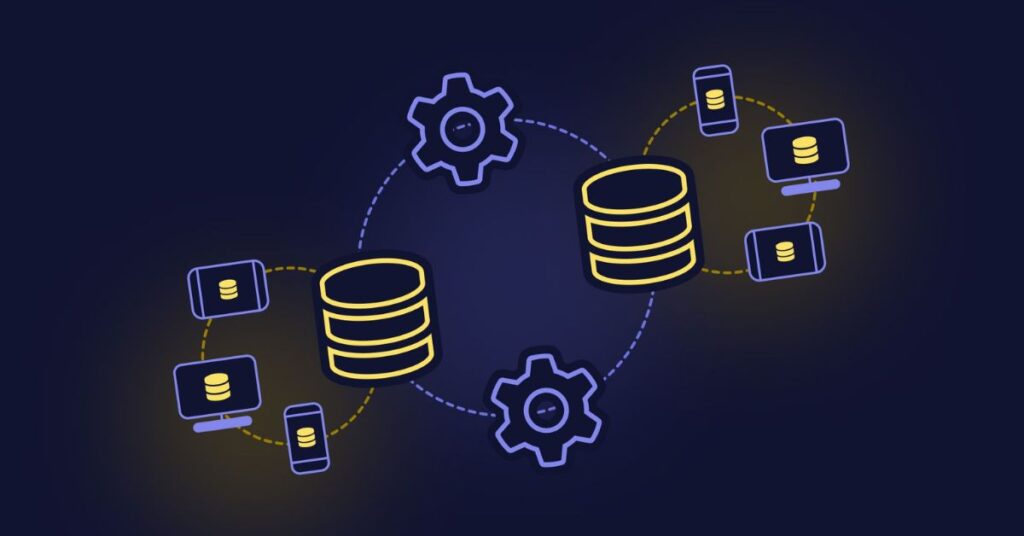Data integration and management are crucial in today’s tech industry. Companies rely heavily on efficient data handling to make informed decisions, streamline processes, and stay ahead in competitive markets. SSIS 816 has emerged as a pivotal tool in this landscape, revolutionizing how businesses approach data integration and migration. In this article, we will delve into the history of SSIS 816, explore its features and capabilities, examine its impact on the tech industry, and look ahead to future developments.
History of SSIS 816 and Its Impact on the Tech Industry
The Evolution of SSIS 816
The journey of SSIS 816 began with a growing demand for more efficient data management tools. Before its release, businesses struggled with handling large volumes of data across disparate systems. Earlier versions of SQL Server Integration Services (SSIS) laid the foundation, but there was a clear need for a more robust and scalable solution.
SSIS 816 was introduced as a response to these challenges. It brought a host of new features designed to simplify and enhance data integration. This version quickly captured the attention of data professionals and organizations alike, marking a significant shift in how data workflows were managed.
Impact on the Tech Industry
The introduction of SSIS 816 had a ripple effect throughout the tech industry. Companies across various sectors began adopting this tool, recognizing its potential to enhance productivity and reduce operational costs. By streamlining data processes, SSIS 816 allowed organizations to focus more on strategic decision-making rather than being bogged down by technical challenges.
The tech industry, in particular, saw SSIS 816 as a game-changer. Its seamless integration with other software solutions and its ability to handle large datasets with ease made it an essential tool for developers and data engineers. This widespread adoption of SSIS 816 also inspired other software solutions to incorporate features and capabilities that mirrored its innovative approach.
Features and Capabilities of SSIS 816
Intuitive Graphical Interface
One of the standout features of SSIS 816 is its user-friendly interface. Unlike earlier versions, SSIS 816 simplifies complex tasks, making it accessible to users of all skill levels. The graphical interface allows for drag-and-drop functionality, which means users can create and manage data flows without needing extensive coding knowledge. This feature democratizes data management, empowering teams across various disciplines to engage with data integration processes effectively.
Data Flow Transformations
At the heart of SSIS 816 are its data flow transformations. This capability allows users to manipulate and convert data from various sources, ensuring consistency and accuracy throughout the process. Whether working with XML, JSON, or Excel files, SSIS 816 provides tools to transform raw data into actionable insights.
Integration with Cloud Services
In today’s world, cloud integration is vital for managing large datasets. SSIS 816 offers seamless integration with major cloud platforms like Azure, Google Cloud, and AWS. This feature enables organizations to handle their data more efficiently, regardless of where it resides. By bridging on-premises systems with cloud solutions, SSIS 816 enhances flexibility and scalability, allowing businesses to adapt quickly to changing demands.
Robust Error Handling
Data integration and migration can be complex processes, often prone to errors. SSIS 816 addresses this with robust error handling mechanisms. When issues arise, users can access detailed logging options that facilitate quick troubleshooting and resolution. This ensures that data integrity is maintained throughout the integration process, minimizing the risk of costly mistakes.
Support for Multiple Data Formats
Versatility is a key strength of SSIS 816. The tool supports a wide range of data formats, including XML, JSON, and Excel. This makes data movement seamless and efficient, as organizations can integrate diverse data sources without compatibility issues. The ability to handle various formats also streamlines workflows, reducing the time and effort needed to manage different types of data.
Related Blog” Rena Monrovia When You Transport Something By Car
How SSIS 816 Revolutionized Data Integration and Migration

Transforming Data Workflows
Before the advent of SSIS 816, data integration and migration were often cumbersome tasks that required extensive manual intervention. With the introduction of SSIS 816, these processes were transformed. The tool provided a user-friendly interface that allowed even non-technical users to create complex workflows with ease. This accessibility democratized data management, enabling teams across an organization to contribute to data integration efforts.
Enhanced Performance and Efficiency
SSIS 816 also brought significant improvements in performance. Data extraction, transformation, and loading (ETL) processes became more efficient, with reduced processing times and enhanced accuracy. The tool’s ability to handle large datasets without sacrificing speed or reliability made it a go-to solution for organizations looking to optimize their data workflows.
Cloud Integration and Modernization
The support for cloud integration was another revolutionary aspect of SSIS 816. As businesses increasingly moved towards cloud-based infrastructures, SSIS 816 provided a bridge between legacy systems and modern platforms. This facilitated smoother transitions, enabling organizations to modernize their operations without disrupting existing workflows.
Improved Error Handling and Data Integrity
Maintaining data integrity during integration and migration is crucial. SSIS 816‘s robust error handling features ensured that businesses could move large datasets with minimal risk. Detailed logging and troubleshooting options helped maintain data quality, giving organizations confidence in their integration processes.
Success Stories and Case Studies of Companies Using SSIS 816
Healthcare Industry: Enhancing Patient Data Management
A leading healthcare provider implemented SSIS 816 to improve its patient data management systems. By leveraging the tool’s advanced data flow transformations, the provider was able to reduce data processing times significantly. This efficiency gain allowed medical staff to focus more on patient care rather than administrative tasks. The seamless integration of disparate data sources also improved the accuracy and accessibility of patient records, leading to better healthcare outcomes.
Retail Sector: Optimizing Inventory Management
In the retail industry, a major brand utilized SSIS 816 to streamline its inventory management processes. By integrating real-time sales and stock level data, the company was able to make more informed decisions about restocking and promotions. This not only improved operational efficiency but also led to substantial cost savings by minimizing overstock situations. The ability to quickly adapt to market demands gave the company a competitive edge.
Financial Services: Seamless Migration of Legacy Systems
A financial institution faced the challenge of migrating its legacy systems to a modern platform. SSIS 816 provided the perfect solution, offering robust error handling and cloud integration capabilities. The migration was executed without any disruption to ongoing operations, ensuring business continuity. The institution also benefited from enhanced security measures, reducing the risk of data breaches during the transition. This case highlights how SSIS 816 can be instrumental in modernizing infrastructure while maintaining high standards of data integrity.
Related Blog” Netwyman Blogs
Comparison with Other Data Integration Tools

Talend
Talend is another popular data integration tool that offers open-source flexibility and strong cloud capabilities. However, it may lack the user-friendly experience that SSIS 816 provides. While Talend is a powerful tool, its steeper learning curve can be a barrier for non-technical users. Additionally, Talend’s cloud integration, while robust, may not offer the same seamless experience as SSIS 816 for users already embedded in the Microsoft ecosystem.
Informatica
Informatica is known for its robust enterprise solutions, making it a favorite among large organizations with complex data integration needs. However, it can be more challenging to implement and often comes with a higher cost compared to SSIS 816. While Informatica offers a wide range of features, its complexity can be overwhelming for smaller teams or organizations looking for a more streamlined solution. SSIS 816, on the other hand, offers a balanced approach with strong capabilities and easier integration, particularly for businesses already using Microsoft products.
SSIS 816 Advantages
| Feature | SSIS 816 | Talend | Informatica |
| User Interface | Intuitive and user-friendly | Complex, requires technical knowledge | Complex, suitable for technical users |
| Cloud Integration | Seamless with Azure, Google Cloud, and AWS | Strong, but less integrated with Microsoft | Strong, but can be costly |
| Error Handling | Robust with detailed logging | Adequate, but not as detailed | Strong, but complex to configure |
| Cost | Cost-effective, especially within Microsoft ecosystem | Open-source options available | Higher cost, enterprise-focused |
| Integration Ease | Easy integration with Microsoft products | Good, but may require additional configuration | Excellent, but complex setup |
Future Developments and Advancements in SSIS 816
Integration with Emerging Technologies
As technology continues to evolve, so too will SSIS 816. One of the most anticipated developments is the integration of artificial intelligence (AI) and machine learning (ML). These technologies could significantly enhance data processing capabilities, allowing for more automated and intelligent decision-making processes. For example, AI-driven data transformations could optimize workflows in real-time, adapting to changing data patterns and improving efficiency.
Expansion of Cloud Services Integration
The future of SSIS 816 is likely to see even deeper integration with cloud platforms. As businesses continue to transition to cloud-based solutions, SSIS 816 will play a crucial role in facilitating these migrations. Enhancements in cloud services integration will enable more seamless data flows between on-premises and cloud environments, reducing latency and improving data accessibility.
Enhanced Support for Big Data Frameworks
The growing importance of big data analytics cannot be overstated. Future versions of SSIS 816 are expected to offer enhanced support for big data frameworks such as Hadoop. This will allow organizations to manage and analyze vast amounts of data more effectively, unlocking new insights and opportunities. With these advancements, SSIS 816 will continue to be a key player in the data management space.
Continued Focus on Security
In an era where data breaches and cyber threats are increasingly common, SSIS 816 will likely place a strong emphasis on security measures. This will include more robust encryption options, enhanced access controls, and improved auditing capabilities. These advancements will ensure that organizations can trust SSIS 816 to safeguard their most sensitive data, even as they leverage its powerful integration capabilities.
Conclusion
SSIS 816 has truly changed the landscape of data integration and migration. From its user-friendly interface to its robust capabilities, this tool has empowered businesses across industries to manage their data more efficiently and effectively. The success stories and case studies we’ve explored demonstrate the profound impact that SSIS 816 has had on organizations worldwide. As we look to the future, the continued evolution of SSIS 816 promises to bring even more innovations and advancements, solidifying its place as a cornerstone of modern data management.
Whether you’re a seasoned developer or a business leader looking to optimize your operations, SSIS 816 offers a comprehensive solution that meets the demands of today’s fast-paced tech environment.
Hey, Molar is the voice behind this all-encompassing blog, sharing expert insights and practical advice on business, real estate, and more. Dedicated to helping you navigate the complexities of these fields, Kelly provides the latest trends, in-depth analyses, and creative strategies to elevate your ventures.
